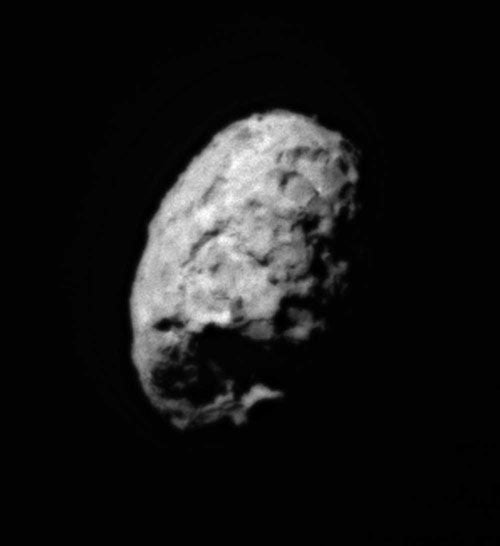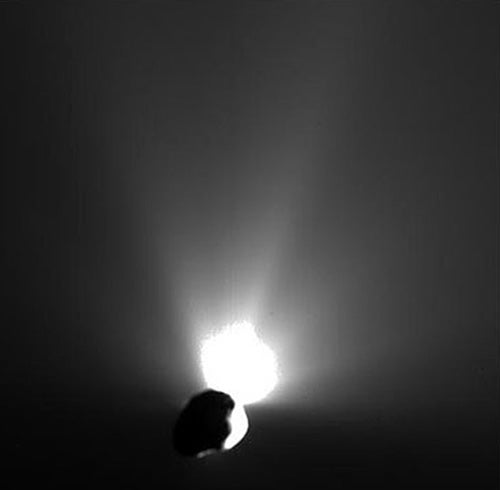“Placing Stardust in hibernation gives us options to possibly reuse it in the future,” says Tom Morgan, Stardust program executive at NASA Headquarters, Washington. “The mission has already been a great success, but if at all possible, we may want to add even more scientific dividends to this remarkable mission’s record of achievement.”
In November, NASA announced it’s considering sending the spacecraft to Comet Tempel 1, last seen close-up in July 2005 by the Deep Impact spacecraft. If funded, the Stardust NExT mission would fly past Tempel 1 to observe how the comet has changed since Deep Impact’s visit.
In 2005, Tempel 1 made its closest approach to the Sun. As a result, the comet’s icy surface may now look quite different. Stardust NExT would give scientists a glimpse of the changes wrought by a comet’s single pass through perihelion. And although Deep Impact blasted a hole in the comet, the unexpectedly opaque dust cloud that resulted kept scientists from even locating the crater they’d made. That’s something Stardust NExT may be able to do.
Stardust is a little the worse for wear. The Navigation Camera’s filter wheel is stuck in the clear-filter position, where it was used for the Comet Wild 2 flyby in January 2004. This was also the last time Stardust had the camera powered up. Contamination deposits in the camera optics can become so severe that images are unusable. But, with the help of spacecraft heaters and the Sun, engineers cleared the deposits for Stardust’s last comet flyby.
There’s stray light in the camera’s periscope, which is needed to image through the spacecraft’s protective dust shields, but it had little impact during the 2004 flyby. More importantly, dust-particle impacts have pitted the periscope’s optics, which reduces image quality.
Stardust’s Dust Flux Instrument is subject to overheating and can be used for only 35 minutes before it must be reset. Otherwise, the spacecraft appears to be in good health, with a little more than 39 pounds (17 kilograms) of propellant remaining.
Cornell University’s Joe Veverka, a member of the Deep Impact science team, proposes firing Stardust’s thrusters in September 2007 to modify its return to Earth. Then, the Earth flyby would put the craft on target for a February 14, 2011 rendezvous with Tempel 1.
“It would be a flyby, so hopefully you would see the crater side,” says JPL’s Donald Yeomans, a comet expert who also served on the Deep Impact science team. “One of the questions is, ‘Can you actually predict the rotation of this thing well enough so that you can ensure that you would fly by and see the crater?'”
And Stardust may not be the only spacecraft doing double duty. The Deep Impact mothership will fly past Earth in December 2007, which sets it up for a mission to Comet Boethin in 2008. Michael A’Hearn of the University of Maryland would lead the proposed Deep Impact eXtended Investigation (DIXI).
In November, NASA gave both “missions of opportunity” $250,000 for further development. If NASA opts to continue Stardust NeXT and DIXI, each project must be completed — including data archive and analysis — for less than $35 million. This is less than 10 percent the cost of a new Discovery-class mission.
“We seem to know less about comets now than we did before these encounters,” Yeomans says. But, he adds, this is a good thing. “We were getting far too comfortable with the incorrect impression of what these objects are.”











